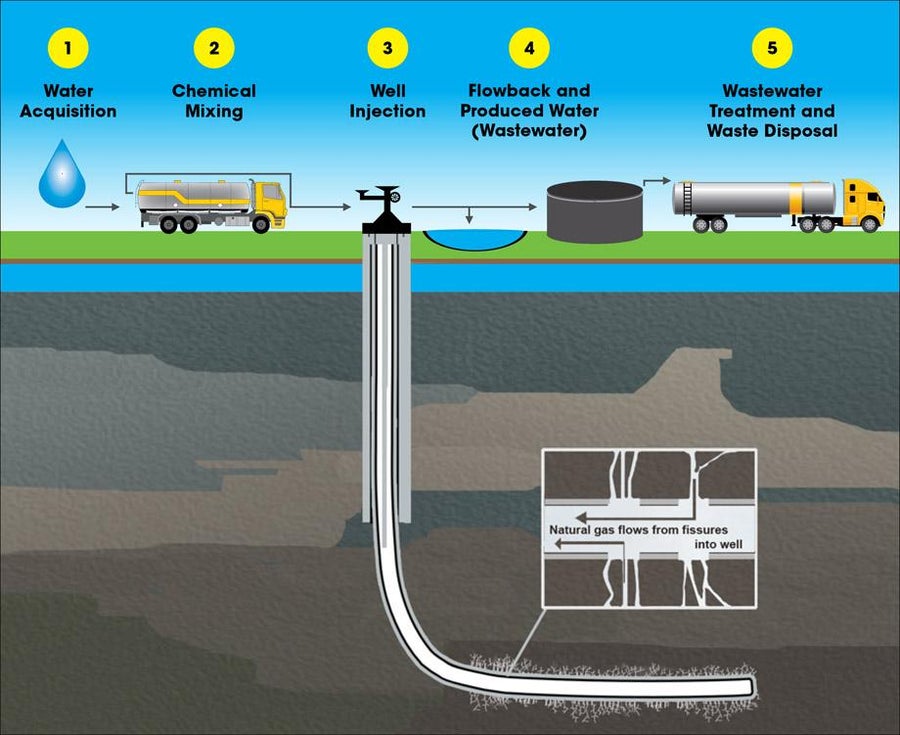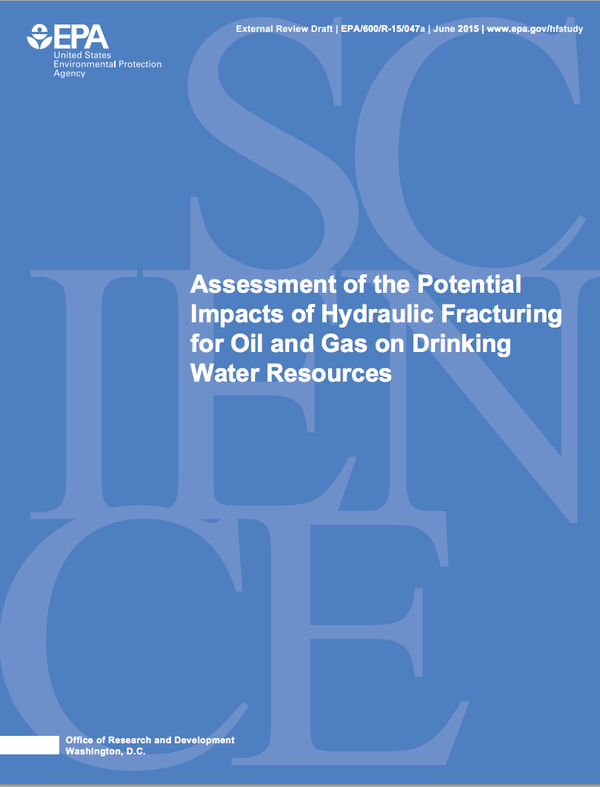This article was published in Scientific American’s former blog network and reflects the views of the author, not necessarily those of Scientific American
Today’s release of the U.S. Environmental Protection Agency’s report on hydraulic fracturing (“fracking”) concludes that this process for extracting oil and gas has “not led to widespread, systemic impacts on drinking water resources.” However, the EPA also noted that there exist “potential vulnerabilities in the water lifecycle that could impact drinking water” and that contamination has occurred in a relatively small number of cases.
Hydraulic fracturing or “fracking” is a process of injecting fluids under pressure into rock formations in order to release the oil and natural gas contained within these rocks. The fluid typically contains a combination of water, sand, and chemicals though some companies use ceramic beads instead of sand. Both the beads and the sand grains help to keep fractures in the rock open in order to increase the well’s production.
The EPA’s conclusions were drawn from a detailed review of “available scientific literature and data to assess the potential for hydraulic fracturing for oil and gas to change the quality or quantity of drinking water resources.” In their assessment, the EPA considered the following activities in the fracking process that involve water:
On supporting science journalism
If you're enjoying this article, consider supporting our award-winning journalism by subscribing. By purchasing a subscription you are helping to ensure the future of impactful stories about the discoveries and ideas shaping our world today.
Water acquisition
Chemical mixing
Well injection
Flowback and produced water
Wastewater treatment and waste disposal

Photo Credit: U.S. EPA
In their review, the EPA found that:
“Although proximity of hydraulic fracturing activities to a drinking water resource is not in of itself sufficient for an impact to occur,, it does increase the potential for impacts. Residents and drinking water resources in areas experiencing hydraulic fracturing activities are most likely to be affected by any potential impacts, should they occur. However, hydraulic fracturing can also affect drinking water resources outside the immediate vicinity of a hydraulically fractured well; a truck carrying wastewater could spill or a release of inadequately treated wastewater could have downstream effects.”
With regards to proximity to both people and water resources, the EPA found that fracked wells were drilled within one mile of the homes of approximately 9.4 million people between 2000 and 2013. Furthermore, 6,800 drinking water sources for public water systems were located within a one-mile radius of fracked wells over the same period. For perspective – these 6,800 drinking water sources provided water year-round to more than 8.6 million people in 2013.
While the EPA did not find evidence of “widespread, systemic impacts on drinking water resources in the United States” they did find cases where drinking water contamination from fracking did occur. According to the EPA report, these identified cases of drinking water contamination were small in number compared to the total number of fracked wells in the United States. However, the EPA was quick to add that these small numbers might be due to “other limiting factors” including:
insufficient data on the quality of drinking water resources pre- and post-fracking activities
the presence of other sources of potential contamination
the inaccessibility of some information on fracking activities and potential impacts
The EPA’s study began in 2011 at the direct request of the U.S. Congress. Today’s report is referred to as a “draft assessment” for external review.
Reference: U.S. EPA. Assessment of the Potential Impacts of Hydraulic Fracturing for Oil and Gas on Drinking Water Resources (External Review Draft). U.S. Environmental Protection Agency, Washington, DC, EPA/600/R-15/047, 2015.
